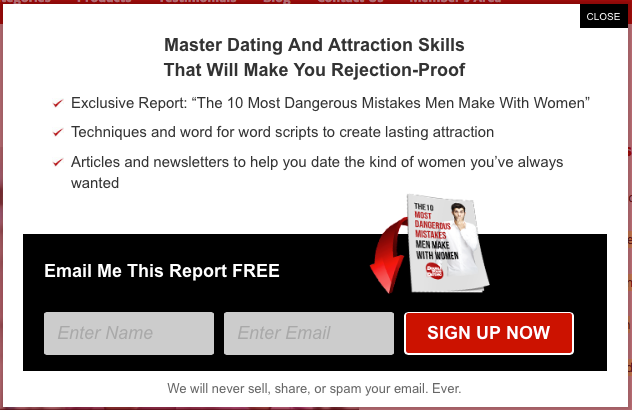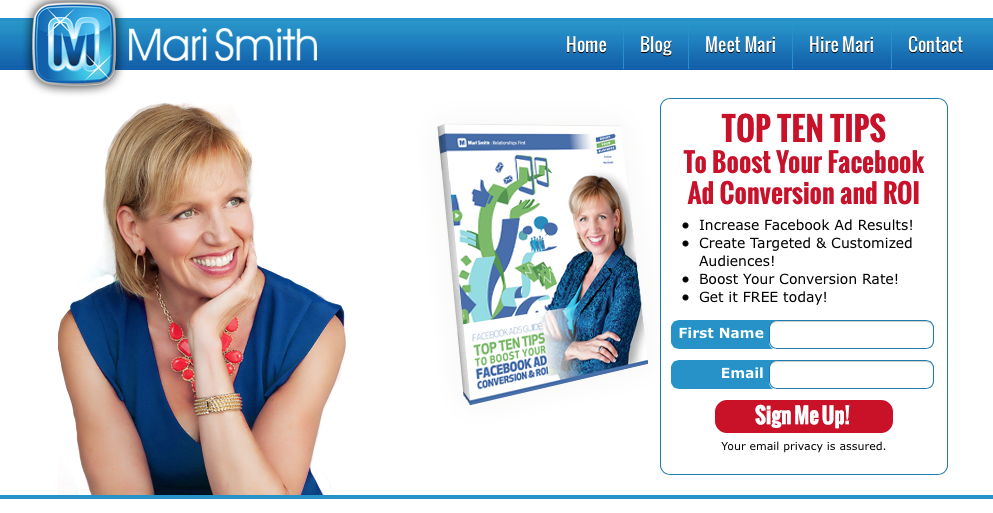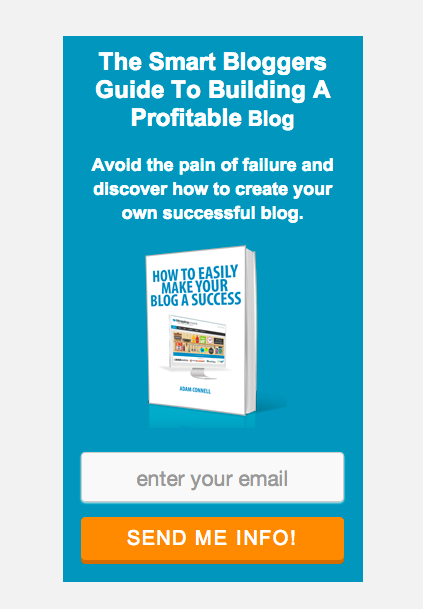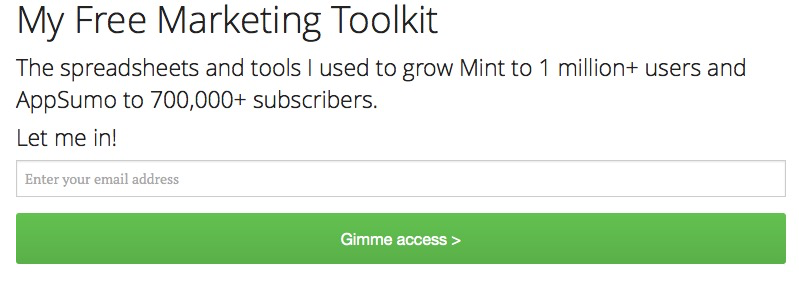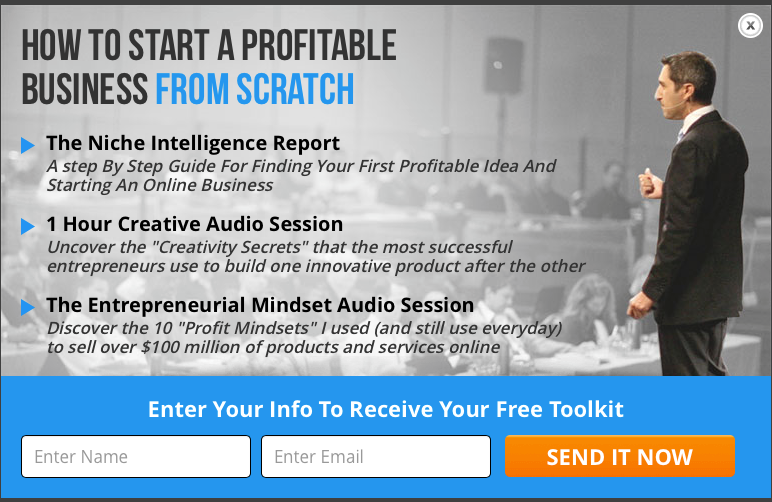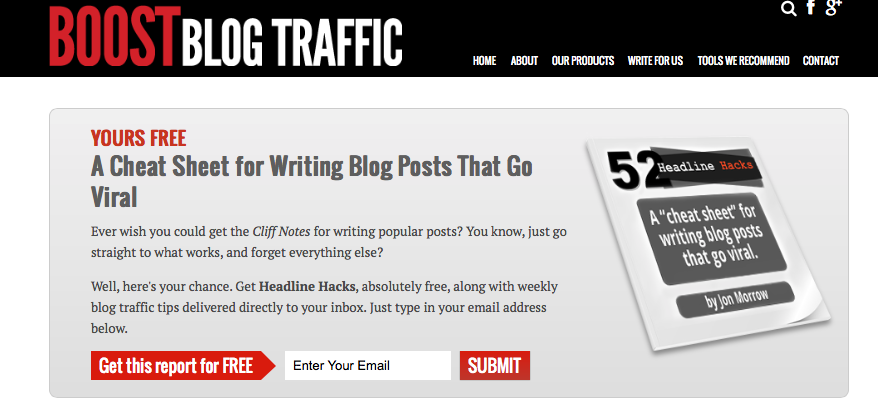The 3 Step Lead Magnet Creation Blueprint
1. Introduction
“Email is dead”…
If you’ve been involved with online marketing even a little while, you’ve probably heard more than one pundit proclaim the death of email with the advent of each new social media site or instant messenger app.
I’m here to tell you: email is NOT dead – not by a long shot. Need some proof? Here’s just a smattering of staggering email user statistics from reputable studies:
A Forrester Research study found that in the US alone, volumes will reach a high point of 838 billion marketing messages in 2013, and we know it’s increased since then.
All well and good you say, but it doesn’t matter how much email is sent if no one reads them. Very astute, my friend! That’s why you’ll be glad to also know that other studies found some rather surprising email user statistics, including:
- E-mail is the preferred method of commercial communication of 74% of all online adults; and of those with an Internet-enabled mobile phone, 55% use it to check their personal e-mail account.
- 91% of consumers check their email at least once a day, with email being the most popular activity on smart phones among users ages 18-44.
And, this is not just to check email from mom ‘n’ dad, or the spouse and kids. Much of it is from companies and brands that people like (with the average consumer following an average of 12 brands with some measure of interest and loyalty).
A staggering 77% of consumers prefer to receive permission-based marketing communications through email. This dwarfs both text messaging (5%) and social channels (6%) while further highlighting how email has become the principal channel that consumers use to manage interactions with brands.
In fact when email users were asked to “receive updates” from companies, only 10% elected to do so through Facebook, while 90% opted for a newsletter. (Newsletter being the email format generally used by larger brands.)
And folks are not just browsing these emails — they’re buying! Marketing week discovered that “40% of customers are willing to give permission to be emailed in return for something of value, and with 66% of customers likely to make an online purchase as a result of a marketing message”.
As a relatively inexpensive channel for reaching consumers, the return on every dollar invested is staggeringly high (when done right). In their study, EmailExpert.org discovered that (in 2014) every $1 invested in email marketing returns $44.25 on average. That’s about 4,125% ROI, if you’re doing the math.
No, my friend. Email is not dead. It’s not only alive and well – it’s doing better than ever, and generating more returns than virtually any other sales or marketing channel today.
But let’s not get ahead of ourselves. If you read the above carefully, you’ll notice that everything hinges on one very important thing: PERMISSION.
Without the user’s consenting to receiving our email broadcasts – this is a pipe dream: a non-starter.
Because just as they gladly receive email from brands to whom they’ve given permission, they will enthusiastically pull the “spam trigger” on any unsolicited email. (Oh sure, you might buy a little time if you’re a favored brand, but slip up just once and BAM! You’re spam. Never to be seen or heard from again.)
How do we get that permission – especially from web-strangers who visit our site and ‘meet us’ for the first time?
Enter the humble “Lead Magnet”.
The Lead Magnet is a gift we extend to website visitors at no cost or risk to them. In exchange we ask their email address and permission to continue to email them. If we do a good job of knowing what our visitors want, the gift will be something they want and has a sufficiently high perceived value to them that they will agree to the exchange.
With this permission, we have at least some window of opportunity to prove our value, ability and trustworthiness to our reader. If we continue to send emails they find interesting, entertaining and otherwise valuable, they’ll know, like and trust us enough to say “yes” when we extend an offer.
Do this repeatedly, and we develop happy, loyal customers and build a thriving, profitable business.
In fact, the STARTUP Club marketing model is built largely on email marketing. It’s how we proactively engage our subscribers and customers to consume our content, engage in our experiences, and ultimately choose to invest in our products and services.
So you see – the lead magnet is much more than just an “ebook” or “report” or list-building device. It’s the key that opens the door to a long and profitable relationship with happy, loyal customers.
That’s why it’s important to create lead magnets that our website visitors want enough to happily give us their permission-based email address.
In this implementation plan, you’ll find a step-by-step blueprint to help you understand how to conceive of and create an irresistible lead magnet for your specific audience quickly and affordably – even if it’s your first one!
1.2 How to Use This Implementation Checklist
Download and (optionally) print out the worksheet resources provided. You’ll want to have them handy to use as instructed as you work through the Implementation Plan.
Skim through the Implementation plan all the way through to get a “bird’s eye view” of the information, and the steps you will be following. Don’t dwell on any part too long, or be concerned about the details.
But as you go through the Implementation Plan do make note of the sections of particular interest to you, including the ones you are less familiar with and need more time to pore over the details.
Then, when you’re ready to get into action, review each step of the blueprint to get a working knowledge of the goals and outcomes of each step. Then follow the action steps outlined in each step (using your worksheets where applicable).
As you implement a step, refer to the other parts of the Implementation Plan as needed for suggestions on some of the tools and tactics for performing that action.
Use the worksheets and checklists to monitor your progress until you have your lead magnet created and ready to go.
2. Top 5 Types of Lead Magnet
2.1 What Makes a Great Lead Magnet?
In this section, we’re going to look only at the lead magnets that are in demand by, being easily consumed by, and converting best in the online information world.
This is not an exhaustive list, but we’ve compiled a representative list of the best-performing lead magnets of today, and of recent history so you have a good chance of being successful with any of the lead magnets you choose – even if it’s your first one.
- Attention Grabbing. The currency of the day in online marketing is attention. Until and unless we get people’s attention, we can’t begin to engage in conversation with them. Our titles, headlines and promises of benefits will do the heavy lifting here – and all of them will be considerably more effective when we have a clear understanding of the wants and needs of the people we want to attract.
- Polarizing. Our goal is to subscribe only people who are interested and qualified to buy our products and services. The best lead magnets will be of great interest to our ideal prospects, but may hold little or no interest to anyone else.
- Irresistible. It’s irresistible to our ideal prospects. They are compelled to give us their name and email address to get the content, outcome and experience the lead magnet promises. Sometimes, in the case of physical (or printable) lead magnets – it may be the lead magnet itself they’re after. Either way, when the lead magnet is right “on target” with their current needs, wants and interests – they not only want the lead magnet, but other related products and services too.
- Valuable. The subscriber perceives the value of the benefits they receive to far outweigh the “cost” of giving up their name and email address. This value can be something other than the dollar value of the lead magnet. It may also hold high emotional, psychological, or practical value to the subscriber. For example, it helps them relieve a long-standing pain or frustration; it saves them time, money and energy of compiling, learning or evaluating it for themselves; it may reveal a tip, shortcut or technique that gives them greater enjoyment of a hobby or interest they are passionate about.
- Immediately Gratifying. Once people convince themselves that they want our lead magnet enough to subscribe, we want to reward them by providing an immediate payoff for doing so. For smaller lead magnets that are quickly consume (for example a two minute video that reveals the “secret technique’ they subscribed for), that’s fairly straightforward. For lead magnets that are more complex or take longer to consume (email sequence, launch or training video series, email mini course, etc) we want a significant reward to come right away (and tease the rewards and benefits to come in the rest of the lead magnet).
- Easily Consumable. We don’t want to create any friction or impediments to consuming the lead magnet. To do this, we should deliver the lead magnet on media and platforms that the subscribers are accustomed to (and prefer) using, on any device they use, using tools they already know how to use – and include easy-to-follow instructions for those who may not be familiar yet.
- One Thing. Regardless of whether our lead magnet is a simple one-page checklist or a detailed 5-part mini-course, the best lead magnets will support ONE “big idea” or promise ONE specific outcome. Remember: we want to create a fast, valuable, result for the subscriber so they are encouraged to remain subscribed and check out the rest of our content and promotions.
- Trust and Authority Enhancing. You’ve likely heard that people prefer to buy from people they know, like and trust. When a visitor comes to your page for the first time – they don’t know you from Adam, and have no reason to like or trust you. When they subscribe for the lead magnet, they’re saying “OK, I’m willing to check this out to see if you’re someone who understands what I want and are competent and trustworthy enough to get more of my attention”. If the content is indeed valuable to the subscriber, it shows our understanding and ability to serve their needs, and increases trust and rapport – especially if we share our story and background.
- Advances the Sale. The lead magnet’s first goal is to entice targeted and qualified visitors to subscribe and give us permission to communicate with them. The second is to deliver great value and build trust and rapport by providing value. The third – and arguably the most important – goal is to advance the sale. If we’ve designed it right, the lead magnet meets one of many subscribers’ longer-term needs and wants, and increases the subscribers interest in letting us help to meet the rest of their needs – ultimately through the sale of our products and services. So our lead magnet topics must be carefully and strategically selected.
- Related to Buying Cycle. People will be in different stages of their buying cycle: they recognize a need; they gather information; they evaluate alternatives; and they make a buying decision. Use this to select the type of lead magnet that provides information relevant to where prospects are in the buying phase and moves them forward.
- Easily Produced. Over time you’ll create many a lead magnet. The reality is that despite your best efforts, some of them will work – but many won’t. Remember: it’s only the first step in your sales process. So you can NOT afford to invest a lot of time, money and people to create one. Develop a process that works and is repeatable. Favour selecting lead magnets that you can produce most quickly, easily and inexpensively. (Do this and outsourcing may even become a more efficient and less expensive alternative to doing it yourself.)
Follow the steps of this implementation checklist and you’ll create lead magnets with all these qualities that build your list and generate more sales in your business.
Reports and ebooks usually reveals some information or technique that helps to inform the reader about a problem and provide a series of tips, techniques or warnings.
For example, The Niche Intelligence Report reveals the “Top 29 Million Dollar Niches and Specific Tips on How To Start Your Own Business” (Notice: “top 29”, “specific tips” and “how to” .. All in the subtitle):
This other report from the “Double Your Dating” brand reveals “The Top 10 Most Dangerous Mistakes Men Make with Women” — a “top 10” list warning of the mistakes to avoid and “techniques and word for word scripts” to show you how to make yourself attractive and rejection-proof:
Here’s a pure “tips” report from Mari Smith that reveal how “to boost your Facebook ad conversion and ROI”.
Guides can serve the same purpose as a report, but are seen to be lighter in the nature of content, and sometimes useful when the steps or tips don’t need to be enumerated, as in this blogger guide from David Risley:
2.3 Toolkits and Resource Guides
And with much of the technology and marketing processes often seeming like dark magic, it’s no wonder that toolkits and resource guides are some of the best-performing lead magnets today.
Good toolkits and resource guides are often little more than a list of tools or resources — on as little as a single page — but hold the promise of demystifying the shlomo saving the reader a horrendous amount of time researching, learning and testing; and worse of all – making a mistake!
The folks at LeadPages say that their best performing lead magnet of “all time” is a list of the tools they use to create videos. It’s a single page long. Here’s the landing page for it:
Noah Kagan has this mouth watering toolkit on offer:
Here’s a more “beefy” toolkit that’s currently one of the main lead magnets on EbenPagan.com:
Whether 1 page long, or a bundle of resources … the attraction of a toolkit or resource guide is that the subscriber will be allowed “behind the wizard’s curtain” and see what machinery makes the magic happen.
2.4 Cheat Sheets, Checklists, and Other Hacks
These are area also generally easy to create. They typically document a 5-10 step process, with a brief description of what actions are related to each step. Often they are 5 pages or less and sometimes even fit on a single page, like this “1-Page Digital Success Cheatsheet” from Ed Dale:
You’ll notice too that Ed’s offering his cheat sheet as a workbook that you can fill in the blanks and use the same tool as “millionaire marketers worldwide”!
Or are they more a page or two. Like this “Cheat Sheet for Writing Blog Posts That Go Viral” from the BoostBlogTraffic team:
Taken beyond just “cheating”, you could also appeal to the hidden “hacker” in us all:
A “hack” is the ultimate ninja trick, tip or secret. Build up curiosity and pay it off with an “Aha!” moment and you’ve got a winner.
Something about the hint of “cheating”, taking secret short cuts or hacking the system to accelerate the outcome makes these lead magnets weirdly effective. They pique curiosity and promise an unfair advantage. Who could resist? I know I can’t.
2.5 Blueprints, Templates, and Swipefiles
It’s the promise of having to do no work and simply “plugging into the matrix” of a tested and proven system that someone else spent all their time and money developing.
Here’s an example blueprint from Justin Brooke that would be irresistible to anyone who might want to know how to “drive 1 million visitors a year” to their website:
And look here – Mike Filsaime’s suggesting you (ethically) “steal” the very process map that drives massive traffic leads and sales for his 7-8 figure business:
Blueprints and Maps still not enough?
Let’s “up the ante” and just hand over a “swipe file” of the exact word-for-word templates, scripts and copy you use? Can’t get much easier than that to duplicate success, right?
Digital Marketer’s using this type of lead magnet very successfully:
All these types of “plug me into the matrix and download the knowledge” lead magnets are irresistible and rarely more than a few pages long. They appeal to that competitive desire for an unfair advantage, they are easy to consume and the gratification is very immediate.
2.6 Quizzes, Tests, and Assessments
Subject matter aside…if Cosmo keeps publishing quizzes and tests, you know they’re working.
So it’s no surprise that quizzes, tests and assessments work online too. From the fun, wacky and zany to the serious and professional – we seem to be hard wired to know how far above the average we are.
They also work well because these lead magnets don’t ask for an email address until AFTER the visitor has built up his curiosity and peaked his desire by answering the quiz questions.
It’s one of the highest-converting lead magnets, and you’d do well to create one for your audience, like this one that helped Eben launch his Guru Mastermind and Altitude brands:
Here’s another example in the weight loss field:
As well as the globally-reknowned Passion Test, a simple test that created an information empire for Janet and Chris Attwood:
Get creative – make up your own test and get it online today.
One of the reasons events are so effective is that the subscription process is embedded in the registration process. People are accustomed to registering or reserving seats or tickets to an event. As such it is more disarming than a page dedicated to “squeezing” the visitor’s email.
From a sales conversion point of view, the best events are streamed live, and when possible this is the preferred way to deliver it.
However, for the sake of providing ease and immediacy of consumption; and to be able to offer the lead magnet 24/7, a pre-recorded version of the event is often used as the lead magnet.
The other benefit of using an event as a lead magnet is the ease of production. With little more than a slide deck and a conference line or webinar service, we record the presentation when we deliver it live, and the recording is now instantly useful as an audio or video lead magnet; and as a pdf report, guide or cheat-sheet after it’s transcribed.
Virtual presentations are a great way to avoid writer’s block or editor’s perfectionism from creeping in and extending the time to create and publish a new lead magnet.
The technology does change from time to time, but at the moment it seems that most lead magnet presentations are teleseminars, webinars and hangouts. A typical registration page looks like this:
Alex Mandossian, whose list is well over 100K, uses virtual event list building to a whole new level by having a permanent event registration page where people can always sign up for his weekly training hangout (formerly tele seminars). I strongly suggest you consider modelling this strategy:
Naturally, you could model this and use any technology, including teleconferencing, podcasting, or webinars.
Challenges are a unique event-based lead magnet that inspires community and engagement. Ed Dale’s famous “30 Day Challenge” was a free 30-day online success challenge in which over 300,000 people participated and multiplied Ed’s sales exponentially:
The health, wellness and fitness field also suit a “challenge” type of event. A free 30-day Green Smoothie Challenge is a simple cornerstone event that’s built a large and loyal community for the ladies at “Simple Green Smoothies”:
3. Step 1: Generate Topic Ideas
3.1 Discover Top Needs and Wants
Perhaps it eliminates a pain or frustration they’re experiencing; it may gain them an outcome or pleasure they yearn for; or it may reveal a tip or “secret” that gives them an “aha!” moment.
Whatever the case, it’s something they are interested in and curious about enough to give us their email address to have it.
That’s why before we start developing a lead magnet, we are first going to discover the biggest wants and needs, questions and concerns of our target audience. Because if we do this right, we’ll create the ultimate lead magnet, one that:
A) Appeals to people who would invest in our products and services;
B) Addresses a want, need or interest that the visitor currently has; and
C) Is the first step in a conversation in which we engage the subscriber that leads to the sale of a product or service.
An avatar profile that describes our ideal client in terms of demographics, psychographics, values, lifestyle, interests and their biggest unmet wants and needs (the wants and needs we will fulfill with our products and services).
A thorough avatar profile tells us all we need to know to develop lead magnets – and ultimately products and services – that are irresistible to our perfect prospects and customers.
There are some other Implementation Checklists in the STARTUP Club member area that will help you to do market research create your avatar. If you haven’t already, complete these before continuing with the rest of the steps:
Doing this will help you generate a list of avatar wants and needs that are relevant to your audience and proven to be in demand: a crucial requirement for any successful lead magnet.
3.3 Survey The Lead Magnet Landscape
If you sign up to their mailing list, you’ll also see new promotions that they’re running, and receive offers to opt in to other back-end offers that they don’t promote on the websites.
It’s a great way to start brainstorming your lead magnet ideas whether you’re just starting your business or growing it with new lead magnets and sales offers. Over time you’ll build a database of valuable intelligence on what lead magnets and headlines are working best in your market and discover the most popular unmet needs and wants that you can target. Plus, you’ll have a ready-made set of best-performing headlines, benefit statements and lead magnet offers that you can model, adapt and use – which will save you a whole lot of time and money.
Here’s a quick video of you can use the “Lead Magnet Landscape” spreadsheet provided in the resources section (or create your own) to build your list of market-leading lead magnet ideas. It’s an easy way to organize your research and to see trends in the subject and formats that are popular and likely working best.
3.4 Compile List of Potential Topics
- Collect – Collect as much data as you can without evaluating it’s usefulness. We’ll filter out the most viable ones in a later step.
- Simplify – Break compound descriptions of needs and wants into simple single ones. For example, break down “Set up a website, install a theme and learn wordpress” into “Set up a website”, “Install a theme” and “Learn WordPress”. This granularity will allow you to evaluate specific needs common to each of the avatars you’re considering, and prepares you for doing faster and better research and selection In later steps.
For convenience, we’ll use the “Lead Magnets Ideas” spreadsheet to organize our thoughts and get an at-a-glance view of what potential lead magnet topics we have to choose from, and later to evaluate and rank them. You can download the spreadsheet here to customize and use for yourself.
3.5 Compile List of Avatar Wants and Needs
“Needs” for the purposes of this exercise include:
- Fears and frustrations
- Goals and aspirations
- Most frequently asked questions
- Biggest obstacles to getting what they want
- Objections to buying our products and services
- Topics that create the most comments/discussions/debates on related blogs, groups and social media (including your own!)
- …Or any other “Pain” your avatars want to eliminate or avoid, or that might prevent them from investing in your products and services.
“Wants” for the purpose of this exercise include:
- Goals
- Desires
- Aspirations
- Outcomes
- Benefits
- …Or any other “Gain” your avatars want to experience or attain.
Enter these into the spreadsheet column we’ve labelled “Needs/Wants/Q’s/Obstacles”, e.g.:
In the columns to the left of the the wants and needs are avatar names. Being to mark the Avatar name cells along side the wants and needs they have. You can complete this later when you evaluate and select a lead magnet topic, but feel free to start the process here.
You’ll notice there is room for only three avatars. You could use as many as you like, of course, but to keep things fast and simple, I suggest you use no more than three for each lead magnet.
When you’ve entered the Needs and Wants you’re aware of for the time being, and identified the avatars related to each, you can check this step off your list.
4. Step 2: Choose the Lead Topic
4.1 Select a Lead Magnet Topic
Review the list of needs in your Lead Magnet Ideas worksheet. As you do, jot down ideas for potential solutions you could offer for each of these needs.
You can write one or more ideas for each – brainstorm liberally here and generate as many ideas as possible. We’ll whittle them down later.
Think of what advice or support you could offer to alleviate their concerns/influence their buying decision. Consider what insight your could offer about the problem in a way no one else can.
For now, you can phrase the solution in any way that comes to mind. It can be in terms of benefits, outcomes, the format or type of lead magnet, the tools and resources, the advice you would give, the actions you’d take — whatever comes to mind.
Great ideas have been known to go as quickly as they come to us — don’t let them escape: capture them all!
4.2 Identify Products and Services
Naturally the first choice would be to select a product we already have. But if you’re just getting started, you may not have products created yet. In that case, you can either use someone else’s product that you can sell as an affiliate, or use a product that you want to launch (once you have a big enough list of subscribers from the lead magnet to confirm the demand).
4.3 Rank and Select The Best Idea
- How easy/accessible the product is that we want to sell
- The relative demand that we see for the topic
- How relevant is it to the avatars (I.e. How many of the avatars does it apply to?)
- The ease with which we can produce the product (in terms of availability, development time, the type of media the lead magnet will use, your experience with the problem/solution, costs, resources, etc).
Feel free to add any other criteria that you feel are relevant for you to make a selection decision.
Rank each idea on these criteria on a scale of 1-10. The “Score” column automatically adds up the total scores of all the criteria.
As you might have noticed, in our example the “Wake Up Productive” and “Startup Club” products rank the highest, and have the same score.
If you’ve chosen your avatars and criteria well, this doesn’t happen too often. But when it does, just consider another criteria that might differentiate the two, or “play off” the two against each other again one criteria at a time (and be more critical in your assessment (make use of those decimal places!).
If you still come up tied, then either one will do! Go with your gut and pick the one that feels right or that you’re most excited about doing. If it doesn’t work, you know you already have another great idea waiting in the wings!
Ok, picked one? Great – check this off your list, you’re ready to create your lead magnet.
5. Step 3: Create the Lead Magnet
5.1 Choose the Type Of Lead Magnet
Let’s take all the relevant information off the spreadsheet and summarize it in the Lead Magnet Production Worksheet. This will be your constant companion during this production stage – and will be a handy reference for when you’re developing ads and opt-in pages.
Part of our consideration, of course, is to choose the type of lead magnet for which our target audience has already shown a preference and demand. Review the results of your “Lead Magnet Survey” for ideas of the types of lead magnets that seem to be popular and working well in your industry.
Don’t worry about choosing the “right” type of lead magnet now – just choose one. Over time, you’ll produce many lead magnets. Some will work, some won’t. If you create simple lead magnets, you’ll be able to create and deploy them quickly and let the market tell you which ones are winners.
5.2 Choose the Lead Magnet Media Format
- Subscriber Preference. To meet the goal of easy access and consumption, choose a media format that your audience is used to using or prefers, and is accessible on any device they use. Don’t make the “latest ‘n’ greatest” technology sway you here: the less learning curve your subscribers have, the more likely they’ll consume and at on your content.
- Accessibility. The media format must be widely accessible across the full range of devices that most of your subscribers (you’ll never get 100% – but get as many as possible). Watch your analytics to determine which devices, browsers and operating systems your audience uses.
- Ease of Implementation. We want to be able to create multiple lead magnets quickly and easily. Speed of iteration is critical to test, tweak and discover the perfect lead magnet for our purposes. Of the media formats that subscribers prefer, choose the one that is fastest and easiest for you to produce and publish.
- Delivery Costs. Closely related to the “ease of implementation”, this has to do with your ability to bear and costs associated with the delivery of the lead magnet (and product). The good news here is that there a lot of free and low cost tools available. Keep it simple, keep it cheap – especially when you’re first starting, or in the early days of testing how well the lead magnet works.
Most lead magnets in our industry are currently delivered in the following formats:
- PDF Documents
- MP3 Audio files (streaming or for download)
- MP4 Video files (streaming or for download)
- ZIP files (a compressed file format that may contain files in multiple types)
- Live virtual events (webinars, teleseminars, hangouts, lifestreams, etc)
- Blog / Website content
There are free and low cost tools aplenty to help you create and deliver all these media formats.
5.3 Create the Lead Magnet Title / Headlines
Like selling a product, we’ve got to create a title and headline that captures attention and articulate benefits that compel visitors to subscribe.
Pull out your Lead Magnet Production Worksheet and fill in the “Title/Headline” and “Benefits” sections.
Most lead magnets have minimal graphic design requirements – do your best to keep it that way. You may want a “hero shot” of your product to use on your opt-in pages. Maybe a cover for the ebook or report. Perhaps a graph or two for the content. Beyond that, resist the urge to get any more fancy than you need to convey the lead magnet information effectively, and to promote it.
Use your Lead Magnet Landscape results to find images of great looking designs. Or scan amazon for best selling products and books for ideas. Send your favorite to the designer with requests for any color, font or other changes to make it your own.
Caution: Don’t redesign the entire thing – just make minor changes to the design that make it your own. We want this to be fast, cheap and simple.
You can revise and enhance it after it proves successful.
With your “Lead Magnet Production Worksheet” in hand, grab the tools you need to create the lead magnet in the media you selected, and block out time in your calendar to get it done.
Write the report, guide or ebook. Record the audio or video. Design the mini class or training and put it in the member site or email autoresponder. Whatever your lead magnet required – now’s the time to do it.
Remember: the lead magnet is not meant to be a full-blown product or training. It’s a narrowly focused “first step” that gets the subscriber started on the path to fulfilling ONE of his unmet needs.
I suspect your biggest challenge will be how to keep it short and simple enough! Hang on there, fellow expert — there will be time to dig deep on all aspects of the problem later in the process. For now, let’s just give our subscriber some immediate relief and value on something that’s super important to him now.
Not to worry though. You’ve done a lot of good work filtering, sifting and refining your topic selection. Keep your handy “Lead Magnet Production Worksheet” handy and refer to it often so you stay on track and focused.
With the exception of some 3-video launch sequence lead magnets, try and get your lead magnet produced in a few days (if not sooner).
We want it “out there” and getting feedback as soon as possible.
In fact, if you develop your “Lead Magnet Production Worksheet” meticulously enough, you could even just hand it to an outsourcer like leadmagnetexpert.com and have them do the production for you entirely.
Choose the fastest path to implementation and go!
When your lead magnet’s in hand, check “Produce the Lead Magnet” off your list, and put a bit final check mark on the “Project Completed” checkbox to complete this implementation plan- Congratulations!
6. Summary
Now it’s time to publish it and drive traffic to it, so you can start attracting leads, building your list, and making sales. Go get ’em!

